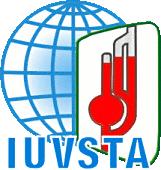Speaker
Description
On-surface chemistry represents a fast-growing field allowing to synthetize molecular structures not available by traditional wet chemistry. In combination with high-resolution scanning probe technique providing the unprecedented spatial resolution, individual products of reactions can be precisely identified. Nevertheless, a deep understanding of the reaction mechanism under the conditions imposed by the substrate remains unknown.
Widely adopted energy reaction path techniques will only describe the potential energy landscape at zero Kelvin, while the free energy landscape at given temperature enables a more appropriate description of the reaction. Such simulations including temperature effect
include the effect of entropy, vibrations modes, concerted motion, etc.
Consequently, such simulations avoid local minima and allows to explore different states, revealing lower energy pathways. We will present QM/MM simulations of strain-induced isomerization in one-dimensional metal-organic chains on Cu(111) surface [1]. The simulation demonstrates the importance of the temperature effect on proper description of the reaction mechanism.
[1] M. Telychko, J. Su, A. Gallardo, Y. Gu, J. I. Mendieta‐Moreno, D. Qi, A. Tadich, S. Song, P. Lyu, Z. Qiu, H. Fang, M. Joo Koh, J. Wu, P. Jelínek J. Lu, Strain‐Induced Isomerization in One‐Dimensional Metal–Organic Chains, Angew. Chem 58, 8591–18597 (2019).

